Nakashima opened in November 2006, run by Tetsuo Nakashima and his wife and serving kaiseki cuisine. The restaurant has a discreet entrance on the corner of a quiet street in central Hiroshima. There are half a dozen of so counter seats directly next to the open kitchen, as well as three little private rooms with sunken seating, all of which were in use on the evening that we visited. There was just one chef and one kitchen porter working tonight, plus the chef's wife and one further waitress doing the front of house. As usual in kaiseki restaurants, there is no a la carte choice, but rather a tasting menu made up of seasonal dishes. You can, however, choose in advance more or less costly menus that will vary in length and ingredient quality, and they will adjust for any food preferences if notified ahead of time.
The meal began with a little citrus salad of taro and a single prawn, served in a hollowed out half of lemon. This was rather reminiscent of a high quality potato salad in taste, and was a pleasant start to the meal (15/20). Sashimi was prettily presented and comprised sea bream from Yamaguchi prefecture, Spanish mackerel caught in Fukuoka prefecture, bonito caught in Kochi and squid from Shimane prefecture. The bream was good, a little firm in texture but with good flavour, the squid pleasant though not of the level of quality to be found at somewhere like Sushi Saito. The mackerel had nice flavour but the best element was the bonito, which had velvety texture and good flavour (16/20 overall, but the bonito was better than that).
Next came a little teapot in which was a steamed broth of Matsutake mushrooms and pike eel. The highest quality local version of this mushroom can fetch $2,000 per kilo in Japan (though imported ones cost a tiny fraction of that) and are some of the finest in the world, reminiscent of top class ceps. The broth was very impressive, having really superb depth of flavour. Once you finish pouring the broth into your cup you open up the teapot and eat the slices of mushroom and eel inside (18/20).
This was followed by steamed anago (sea eel) that was caught locally in Hiroshima. This was simply served with a little freshly grated wasabi, which has the lovely creamy texture and controlled heat that is entirely different from the coloured horseradish passed off as wasabi in so many restaurants. The eel had nice flavour, cooked precisely, and the wasabi was of good quality (15/20).
Next was boiled lotus root, which was grated and then shaped into a ball and partly wrapped in seaweed, served with a thick sauce made from lotus root and I think some mirin. The lotus root certainly had distinct flavour, the seaweed was good and the hint of sweetness in the sauce worked nicely (16/20). Nameko mushrooms were served cold with a hint of mustard, and although pleasant enough it was hard to get excited about this dish; nameko mushrooms are mild in flavour and for me do not have enough distinctive flavour to really carry off a dish on their own (14//20).
This was followed by deep-fried blowfish (fugu) from Yamaguchi, served just with salt, lemon and a single pepper that may have been Japanese but tasted just like a Padron pepper. I have written before about fugu, so will not repeat it here, but I am not enamoured of what is essentially a bony fish with very little flavour, whose main appeal appears to be its ability to kill you if not prepared properly. Some aficionados love it, but it does nothing for me. So here we had a genuinely delicate, excellent tempura batter encasing a rather tasteless bony white fish. Deep-frying is a sensible way to get around the inherent blandness of flavour with blowfish, but to be honest I would rather have some haddock (13/20).
Warm fried potato salad came with a delicate béchamel sauce flavoured with dashi, an unusual dish that worked quite nicely, garnished with a little radish (15/20). Next was a very interesting savoury flan, reminiscent of the umami flan served at Hedone, though in this case with rather more vinegar. This was lovely, having velvety texture and topped with a little cod milt, the overall effect delicious (17/20). As is traditional in kaiseki the final dish was pickles and rice, in this case topped with salmon roe.
Dessert was a jelly of yuzu (Japanese citrus fruit) with mandarin orange and pear. As so often in Japan, the quality of the fruit was superb, the pear and orange having lovely flavour, the yuzu jelly bringing an extra citrus flavour and interesting texture (17/20).
The bill came to ¥23,850 for two, which worked out at £74 a head, with plenty of beer to drink. This was having selected the most expensive menu, so you could eat here for half this price. Service was delightful, the wife of the chef genuinely welcoming and friendly. Only a few words of English are spoken here, but on several occasions she brought out an illustrated book to show the particular fish or mushroom that we were being served. I enjoyed Nakashima very much. It does not have the elaborate sophistication of the top kaiseki places in Kyoto, such as Mizai or Kitcho, but then it is also a small fraction of the price too. A charming experience.
















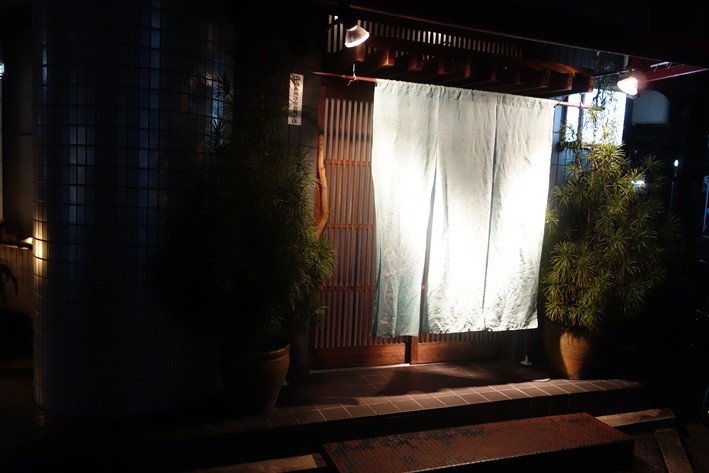

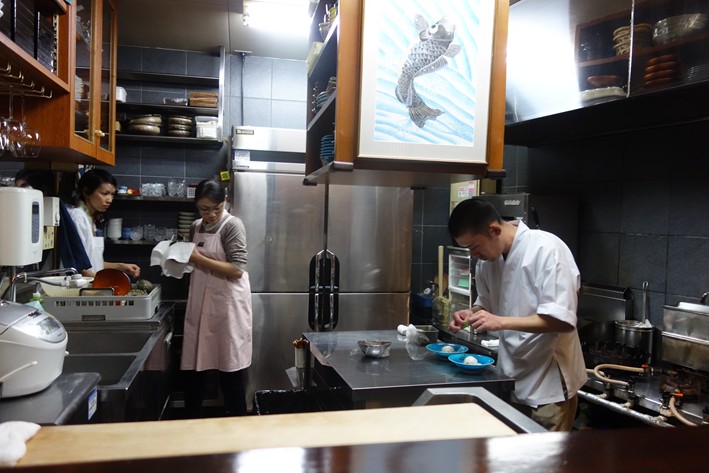


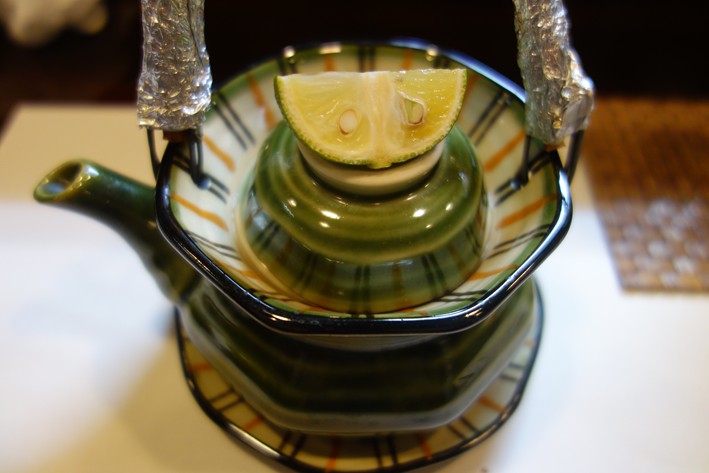
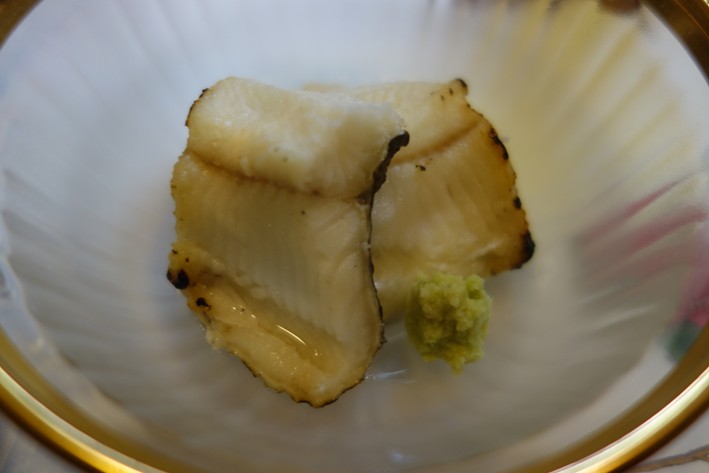
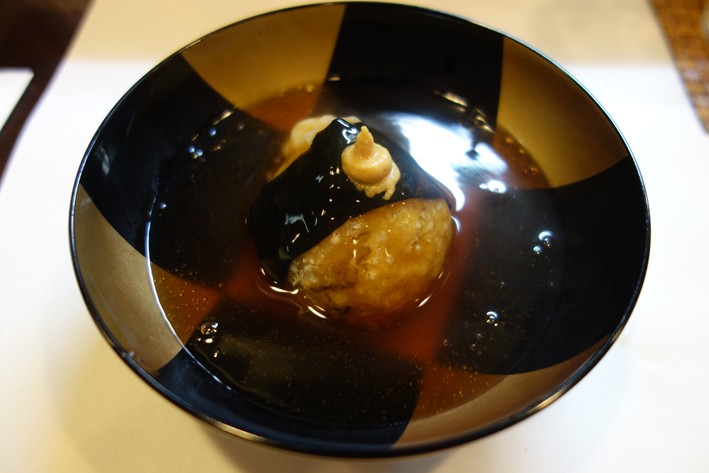
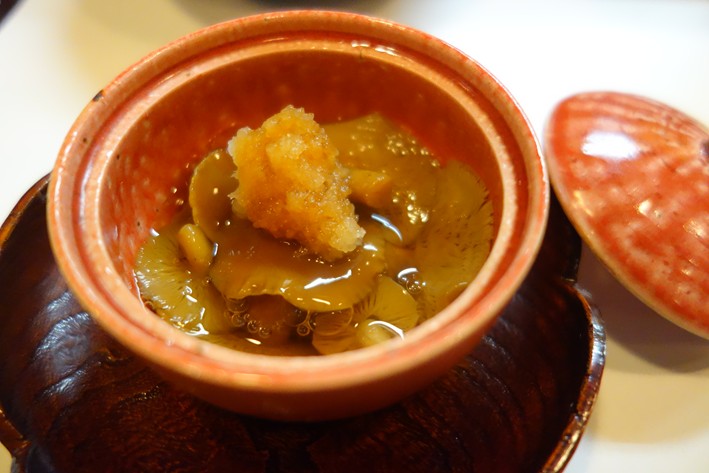
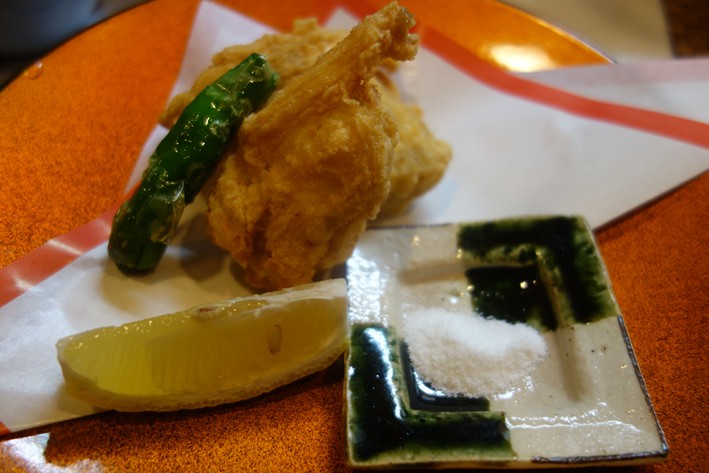

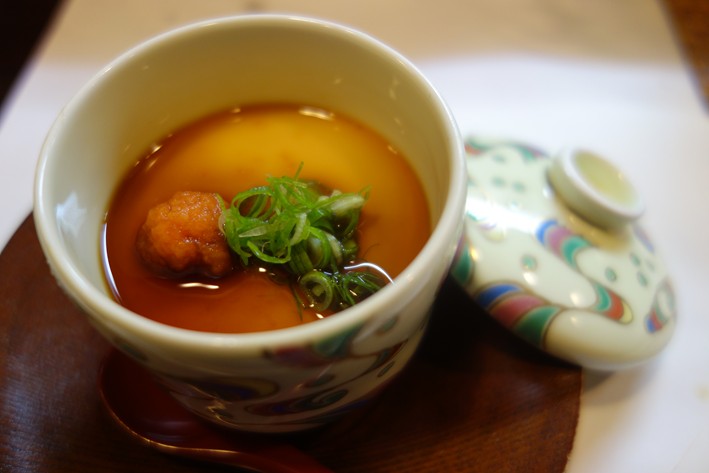
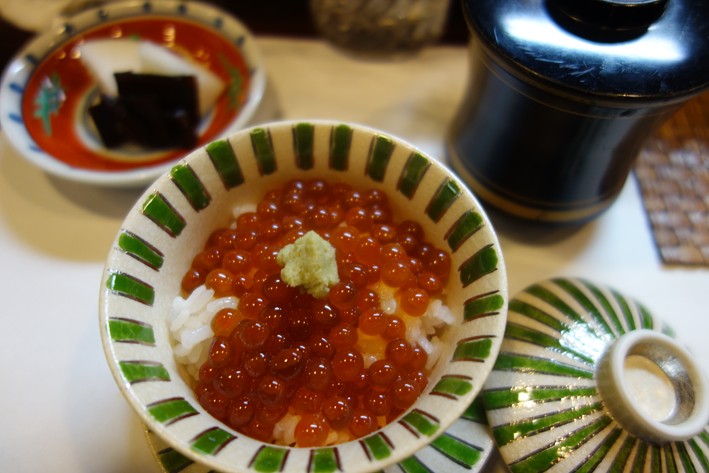
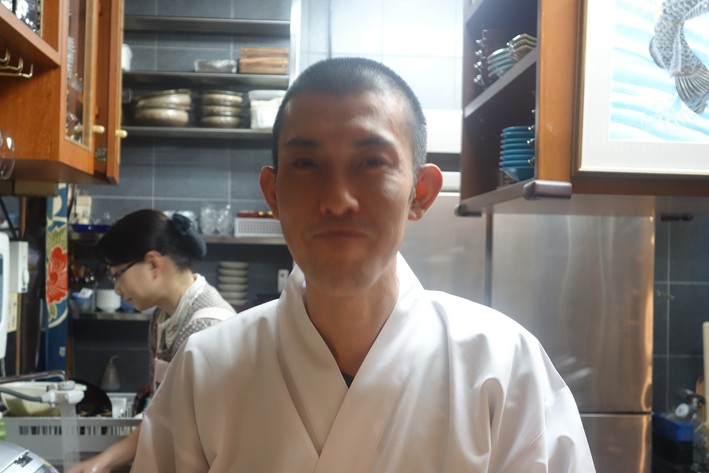


Eric Kellerman
An enjoyable review. Have to agree with you, Andy: Fugu is all about texture and reputation. Deep frying in batter makes it acceptable.
Matthew Jungblut
I'm a Hiroshima resident, and I am also reviewing all of the Michelin star restaurants in the city for a local publication currently. My wife had been there before with a few high ranking local government people. From your review, and from her previous experience, I was anticipating a nice evening with good food and a pleasant service. Well, we got the good food. The service on the other hand was shockingly bad for Japan, not inept or amateurish, but actually hostile. Things started off well enough, the reservation process was no problem... and then it quickly fell to pieces. And we have absolutely no understanding as to why. We've been to the other three Hiroshima restaurants you've reviewed, and had similar experiences to yours. We also have been to several of the other restaurants listed in the Hiroshima Michelin guide - at least fifteen, and without fail they've been generally good to excellent meals, often with the service making up for any other faults. Out of courtesy we mentioned that we would like to take some photos during the meal, as I would be writing a review. Mrs. Nakashima's face turned from pleasant to cold. She informed us that we'd have to check with the chef, Mr. Nakashima, who came out and while not rude, just brusk, told us that we could take pictures of ONLY the food, not him, not the staff, not the restaurant, and certainly not the other customers (the last one being, to me, obvious, I would never take a photo of another customer, likewise if I was to photograph the staff, I'd ask permission first, as we asked before photographing the food). Mrs. Nakashima made a point of snubbing us throughout the rest of the meal, and visiting with the other customers. The young server was pleasant enough, and came with various pictures and explanations of the food (my wife is Japanese, and the photos they brought were actually on an iPad, although they had a book with Japanese written explanations that we could both read, no English or even attempts at it). The food was quite good, but the attitude, which only grew worse from Mrs. Nakashima, which my wife started to really pick up on, made the meal most uncomfortable and unpleasant. Normally in such a counter style kaiseki restaurant, the conversation with the staff regarding the choices of food, the thought behind why they chose certain ways of presenting, the history of the establishment are all a part of the meal. None of that took place. It was by far one of the worst dining experiences I've had, and certainly our worst in the three years we've lived in Hiroshima. Really sad, because the food was good, and we generally return to most of the places we've been, but we recognized that we weren't wanted here.